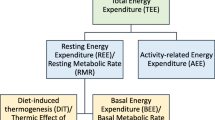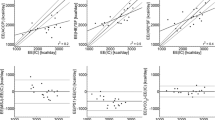Abstract
Indirect calorimetry is a simple and affordable tool for measuring energy expenditure and for quantifying the utilization of macronutrients. Its use is becoming increasingly widespread, but it is necessary to know its methodological features and its theoretical and practical limitations. Indirect calorimetry measures the rate of resting energy expenditure (REE), the major component of the total daily energy expenditure. Thus, indirect calorimetry reliably estimates the individual energy needs. Coupling the measurement of body composition to that of REE expands the diagnostic potential of indirect calorimetry. Once the lean and fat compartments have been measured, it is possible to establish on the basis of REE whether an individual is hyper- or hypometabolic. The evaluation of substrate oxidation by indirect calorimetry is subject to more severe theoretical constraints, because certain metabolic assumptions must be made. The clinical applications are practically unlimited. In the critically ill, a major goal is to maintain energy balance during the hypermetabolic response following trauma. The REE measurement is valuable from the diagnostic standpoint, because it recognizes discrepancies from the expected time-course of hypermetabolism, for example signaling a potentially catastrophic hypometabolic response. REE is also indispensable for providing correct nutritional support because both hyper- and undernutrition lead to increased mortality. In young or elderly patients, in whom energy consumption may be very different from that predicted from equations based on anthropometric measures, indirect calorimetry is particularly useful.
Similar content being viewed by others
Author information
Authors and Affiliations
Rights and permissions
About this article
Cite this article
Battezzati, A., Viganò, R. Indirect calorimetry and nutritional problems in clinical practice. Acta Diabetol 38, 1–5 (2001). https://doi.org/10.1007/s005920170022
Issue Date:
DOI: https://doi.org/10.1007/s005920170022




